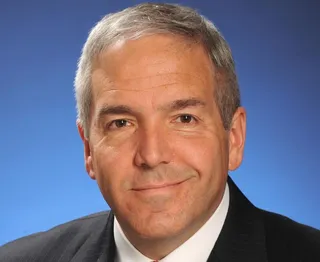
Pandemics: not so unexpected?
Sometimes it is necessary to break an old rule to solve a new problem. The Rule of Indemnity, aka the indemnity principle, says an insurance policy should not confer a benefit greater in value than the loss suffered by the insured. Some parametric covers break this rule, as has been discussed previously in Captive International, but so far regulators seem okay with it.
A second tenet of insurance is that policies provide coverage only against fortuitous—ie, unforeseen—losses. I believe this rule should never be broken. The COVID-19 business interruption exposure was mostly government-driven, and shutting down the world economy was not fortuitous.
What makes a loss fortuitous?
A fortuitous loss is a loss that occurs at a time and in such a way as that the insured could not have anticipated it. It is against public policy to insure a certainty as opposed to a risk. Fortuity ensures that you cannot insure an event that is certain to take place.
On at least three occasions in my long career I have been asked to work on a captive programme for divorce insurance. It has never panned out. Is divorce fortuitous? Few people think about getting divorced on their wedding day, but how about after 10 years of marriage?
The Maldives has the highest divorce rate in the world, at 10.97 divorces per 1,000 inhabitants per year. Belarus is second with 4.63 per 1,000 inhabitants. The US is at 4.34. As bleak as these numbers appear, how much higher would the rate be if you could buy insurance for the financial loss and pain of divorce?
This ended up being the deal-killer on the three divorce programmes I worked on. The moral hazard created by removing the financial risk of divorce makes a fortuitus loss a certainty, or a near-certainty. Who would buy divorce insurance other than someone expecting to use it? No reasonable waiting period or deductible changes that, and one of the biggest risks of an individual’s financial life remains uninsurable.
No-one predicted COVID-19, but experts knew a pandemic was coming. Two pandemics have reached the US in my lifetime. Does that make it fortuitous? While the pandemic itself might be, when it comes to the severity of the business interruption, I do not think so.
There have been many comparisons of COVID-19 to the so-called Spanish flu of 1918–1920, which killed 50 million people. As of July 2020, there were 663,540 reported deaths from COVID-19, which suggests this is (fortunately) probably not a good comparison.
The 1968 Hong Kong flu pandemic killed an estimated one million people globally between 1968 and 1969 (100,000 in the US, most being 65+, per the US Centers for Disease Control and Prevention). Nothing changed economically: nothing closed, and there was no social distancing and no masks.
The 2009 swine flu pandemic lasted 19 months and killed 284,000 people, infecting between 700 million and 1.4 billion (60 million cases and 12,000 deaths in the US). In April 2009, US TV channel CNN confirmed the closing of about 100 US schools, of which 74 had confirmed cases. The other closures were precautionary.
The shutdown of the world economy under COVID-19 has been significant by any measure, and this article is not intended to discuss the value, validity or benefits of a shutdown. However, like my divorce example, what would a global shutdown look like with a business interruption financial backstop? How long would the shutdown be? While no-one can say for certain, I would speculate that it would continue until the money ran out.
Insuring the uninsurable
An uninsurable risk is a risk insurance companies are not willing to take. This could be because it is too expensive or because it is too likely to occur, and would create too much of a loss for the industry.
Insurance is the law of large numbers. It involves spreading risk among a large group, which makes small premium payments to cover large losses, but this only works if most of the group go without a loss, or the money soon runs out. Uninsurable risks can bring down the industry and cannot be taken on as regular coverage.
Insurance companies do sell high-risk coverage. People with uninsurable risk might be able to buy some coverage this way, but coverage is typically limited and expensive. We are starting to see limited pandemic coverage.
The government currently covers some uninsurable risks, such as flood, terrorism, and bank deposits up to a certain dollar amount. The government provides these coverages partly for the common good and because it knows insurance companies will not.
Should the government provide a backstop or coverage for a pandemic? Flood insurance in the US is funded by premiums collected over time as floods are, typically, not annual events. It would be interesting to know where we might be today if the world had started funding for pandemic coverage after the Hong Kong or swine flu outbreaks, but we never will.
Isaac Newton worked on the theory of gravity and created calculus in 1665 when Cambridge University was closed due to the bubonic plague. Maybe there is a rule-breaker out there who has an answer to the global business interruption issue. I’m willing to bet it will somehow include a captive.
Greg Lang is the founder of the Reinsurance and Insurance Network. He can be contacted at: glang@rainllc.com

